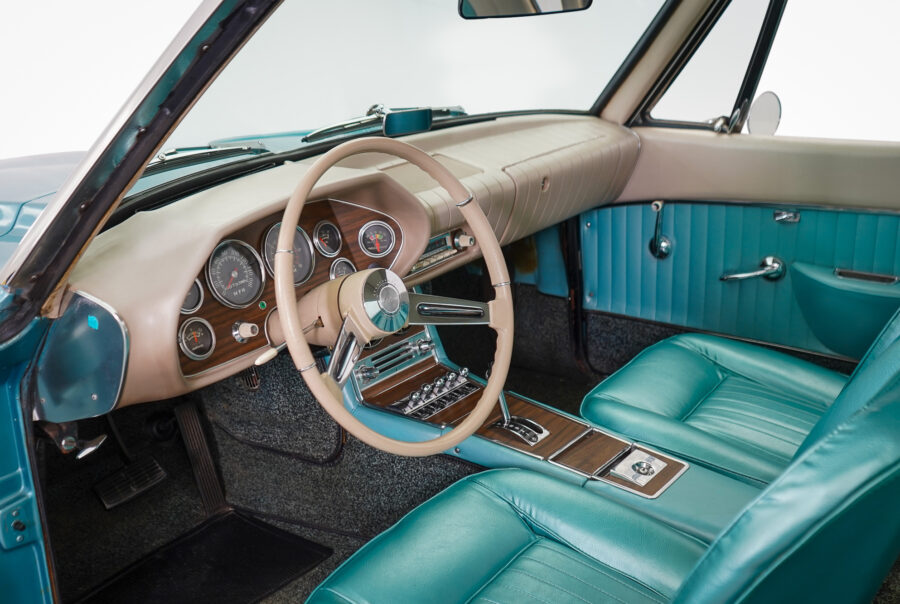

1963 Studebaker Avanti
Click any photo to view fullscreen. Mobile users can pinch to zoom. Tap ‘X’ to close.
SPEED
SPECIFICATIONS
- Engine Size: 289 cubic inches, V8
- Suspension (front): Coil springs and sway bar
- Suspension (rear): Semi-elliptic leaf springs and radius rods
- Curb weight: 3,095 lbs
1963 Studebaker Avanti
Feeling the pressure of Detroit’s “Big Three” (Ford, Chrysler, and Chevrolet), fledgling automaker Studebaker set out to reverse the company’s fortunes with an all-new head turner of a coupe to debut at the 1961 New York Auto Show. Designed in secrecy by a select team with almost no limitations, the Studebaker Avanti was conceived.
With luscious lines and a smooth flowing exterior shape, the Avanti was ready to do battle with its peers over in Detroit. The Corvette and the Thunderbird were establishing themselves as halo brands for their respective car makers. The goal of the Avanti was to do the same for Studebaker. This would, of course, require the car to have the performance specs to match its sexy good looks. The 289 V8 was paired with Paxton superchargers to deliver enough pearl-clutching speed to draw people to the dealerships. A modified Avanti roared to over 170mph at the famed Bonneville Salt Flats, breaking 29 world speed records.
The 2-door, 4-seater Avanti even looks fast on the inside. Bucket seats, a sport steering wheel, and a competition gauge cluster are flat-out spectacular. It’s exactly what you might expect from a car conceived with style and design in mind. The rear seats are very much usable, and generous space and easy access getting in and out of the car.
The Avanti achieved several firsts, including the first American production model to offer British Dunlop front disc brakes. The Avanti was also marketed as America’s “first and only four-passenger high-performance personal car.” The Avanti was named Honorary Pace Car at the 1962 Indy 500, with a brand-new Avanti going to the winner of the race.
In order to achieve the car’s unique body shape, the outer panels were manufactured in fiberglass. The “bottom breather” design takes in air from beneath the front of the vehicle, eliminating the traditional front hood grill. This is a highly modern look, even today, that you’ll find on certain Porsche, Corvette and Infiniti models.
Only 4,000 Studebaker Avanti’s were produced during its whirlwind 2-year run, underscoring the rarity of the car once destined to rule the automotive world.





